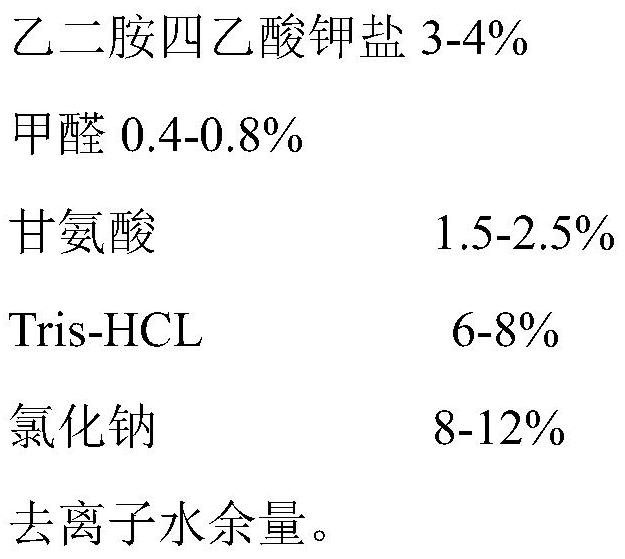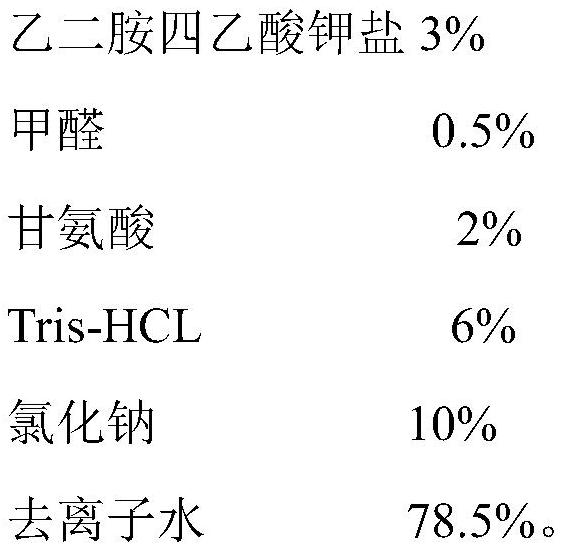Free DNA preservation reagent and preparation method thereof
A technology for storing reagents and deionized water, which is applied in the fields of life science and biology, can solve the problems of increased transportation costs, optimal within an hour, degraded within 6 hours, increased content after 24 hours, and detection failure, etc., to achieve amplification best efficiency
- Summary
- Abstract
- Description
- Claims
- Application Information
AI Technical Summary
Problems solved by technology
Method used
Image
Examples
Embodiment 1
[0020] Prepare free DNA preservation reagents according to the following mass percentages:
[0021]
[0022] Preparation method: put disodium edetate, Tris, sodium chloride, and glycine in a beaker, add 80% deionized water to dissolve, then add formaldehyde, adjust the pH to 5.8-6.8 with 1% hydrochloric acid, and finally add the remaining Dilute to 100mL with deionized water, mix well; filter and sterilize with 0.25μm filter membrane to obtain free DNA preservation solution.
Embodiment 2
[0024] Using the cell-free DNA preservation solution prepared in Example 1, the peripheral blood of pregnant volunteers was collected, and the whole blood cell-free DNA was stored at room temperature for 5 days. Using the above-mentioned whole blood, use Annoroad nucleic acid extraction reagent and fetal chromosome aneuploidy (T21, T18, T13) detection kit to extract cfDNA and build a library. The results and library fragment analysis are as follows:
[0025]
[0026]
[0027] figure 1 It is the peripheral blood of a pregnant woman preserved with the preservation solution of the present invention for 5 days. The fragment analysis chart of the library shows that the fragment size conforms to the ratio of 200bp-300bp fragment / 200bp-400bp fragment>70%, and the position of the main peak is <280bp.
PUM
 Login to View More
Login to View More Abstract
Description
Claims
Application Information
 Login to View More
Login to View More - R&D Engineer
- R&D Manager
- IP Professional
- Industry Leading Data Capabilities
- Powerful AI technology
- Patent DNA Extraction
Browse by: Latest US Patents, China's latest patents, Technical Efficacy Thesaurus, Application Domain, Technology Topic, Popular Technical Reports.
© 2024 PatSnap. All rights reserved.Legal|Privacy policy|Modern Slavery Act Transparency Statement|Sitemap|About US| Contact US: help@patsnap.com










